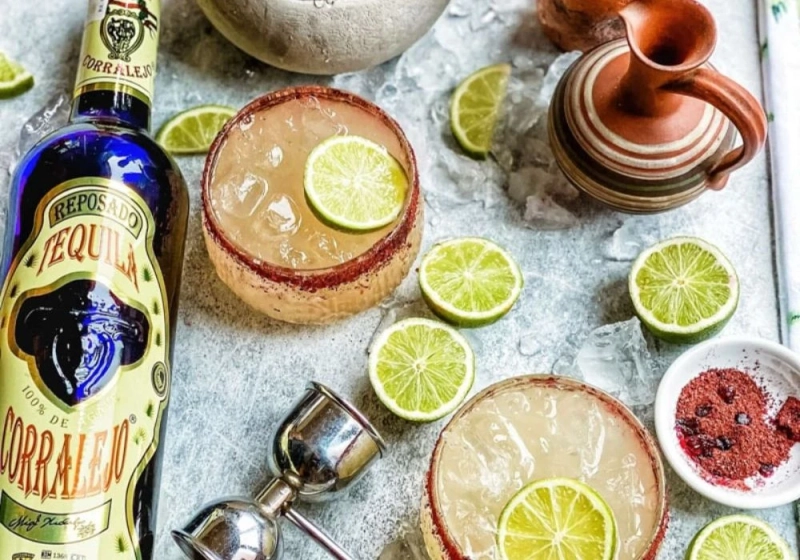Tequila, the beloved spirit synonymous with Mexican culture, has much more to offer than meets the eye – or the glass. Beyond its reputation as a party companion or a shot at the bar, Tequila boasts a rich tapestry of flavours and ageing processes that have led to the creation of five distinct classifications. These classifications aren't just labels; they are windows into the complexity, history, and craftsmanship that define Tequila.
The evolution of Tequila's classifications stems from the different characteristics the spirit acquires after distillation. Each classification presents a unique flavour profile and character that caters to different palates and preferences. These classifications, readily translatable for international audiences, provide a deeper appreciation of the world of Tequila.
1. Blanco (Unaged Brilliance)
The Blanco classification, also known as Silver or Plata, is the most youthful expression of Tequila. It's a pure, unaged spirit that captures the true essence of the agave plant. As soon as the heart of the agave is distilled, Blanco Tequila is ready to be bottled. Its clarity in colour and sharpness in taste make it a popular choice for mixing in cocktails, where its vibrant agave flavours shine through.
2. Joven/Oro/Gold (Harmonious Blend)
Joven Tequila, sometimes referred to as Oro or Gold, represents a harmonious blend of unaged and aged Tequilas. This blending process adds complexity to the spirit, creating a balanced marriage of youthful agave notes and the mellowness of ageing. Often used in cocktails and enjoyed neat, Joven Tequila offers a versatile and approachable option for those seeking a middle ground between Blanco and aged expressions.
3. Reposado (Aged Elegance)
Reposado Tequila takes a step further in the ageing process. Spending a minimum of two months but less than a year in oak barrels, Reposado Tequila takes on subtle notes of wood and mellows out, while still preserving the agave's distinctive character. The ageing imparts a rich golden hue and introduces a delicate interplay between agave sweetness and oak influences. The term "Reposado," meaning "rested" in Spanish, perfectly encapsulates the essence of this category.
4. Añejo (Matured Sophistication)
Stepping into the realm of sophistication, Añejo Tequila is aged for a minimum of one year, infusing it with a deep and intricate character. The ageing process takes place in small oak barrels, allowing the spirit to develop a complex interplay between agave, caramel, vanilla, and wood notes. The term "Añejo," meaning "aged" in Spanish, reflects the maturity and depth that this classification brings to the table.
5. Extra Añejo (The Pinnacle of Aging)
The crown jewel of Tequila ageing is the Extra Añejo classification. Introduced relatively recently in 2006, it requires Tequila to be aged for a minimum of three years in oak barrels. This extended ageing results in a spirit that exhibits unparalleled complexity and depth. Extra Añejo Tequila boasts a beautiful balance between the agave's natural sweetness and the rich flavours drawn from the extended interaction with the wood. This category is a testament to the dedication of Tequila makers to pushing the boundaries of their craft.
Tequila's Sibling Spirits: Mezcal, Sotol, and Raicilla
In the realm of Mexican spirits, Tequila's cousins—Mezcal, Sotol, and Raicilla—deserve their moment in the spotlight.
Mezcal, for instance, shares similarities with Tequila but is distinguished by its unique production process.
The heart of the agave is roasted in underground pits, imparting a distinctive smokiness.
Sotol, on the other hand, is crafted from the Desert Spoon plant and offers a flavour profile that ranges from earthy to herbal.
Raicilla, often considered a sibling to Mezcal, comes from the Jalisco region and boasts its own set of agave varieties and production methods.
The Distinction: Tequila vs. Mezcal
A common question that arises is the difference between Tequila and Mezcal. While both are distilled from agave, their production methods and regions of origin set them apart.
Tequila is specifically made from blue agave and must adhere to strict regulations in designated regions, primarily Jalisco.
Mezcal, in contrast, can be made from a variety of agave species and comes from different Mexican states, including Oaxaca. The hallmark of Mezcal lies in its artisanal production, often involving traditional methods like pit-roasting the agave hearts, which imparts a unique smokiness to the spirit.
In the diverse world of Tequila, these classifications serve as a testament to the craftsmanship, history, and cultural significance that shape this beloved spirit. From the youthful vibrancy of Blanco to the profound complexity of Extra Añejo, Tequila enthusiasts have the privilege of embarking on a tasting journey that spans centuries of tradition, innovation, and appreciation for the agave plant.
Whether enjoyed neat, mixed into cocktails, or savoured with friends, Tequila's story continues to evolve with each sip.



